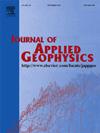Effects of rock pore and micromorphology on electromagnetic radiation characteristics
Abstract
Electromagnetic radiation (EMR) is a crucial tool for monitoring and early warning of underground engineering disasters. Investigating the inherent pore characteristics of rocks is essential for a comprehensive understanding of the EMR phenomenon. The EMR was monitored during various types of rock splitting failures. The pore structure and micromorphology of rocks are studied using quantitative methods such as mercury intrusion porosimetry, fractal analysis, and the Gray Level Co-occurrence Matrix (GLCM). Results indicate that the fractal dimension of red sandstone is significantly lower than the other three rocks. The fractal complexity increases sequentially from red sandstone to marble, granite, and limestone. As the fractal dimension decreases, the signal waveform characteristics of the four rocks become more complex before the main fracture, with a significant increase in signals during the compaction and elasticity stages. Higher fractal dimensions lead to a shift in energy and count from elasticity stage to the post-peak stage. The main fracture amplitudes of the four rocks generally exhibited a consistent pattern, following the sequence of granite > marble > limestone > red sandstone. The main fracture amplitude decreases with increasing complexity of the rock's pore micromorphology. Rock pore characteristics affect frequency domain characteristics by influencing rock strength and crack expansion. An increase in the average pore diameter tends to decrease both the main and center frequencies.

 求助内容:
求助内容: 应助结果提醒方式:
应助结果提醒方式:


